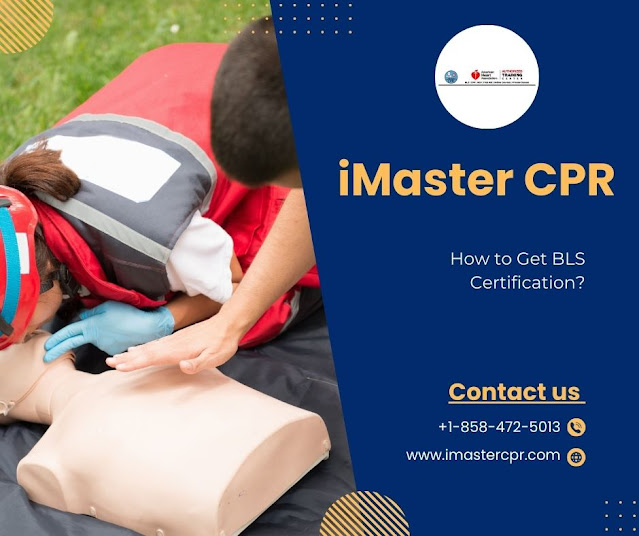What are the Steps of CPR?
Cardiopulmonary resuscitation (CPR) is a critical life saving technique that can make the difference between life and death in emergencies such as cardiac arrest, drowning, or choking. It helps maintain blood flow and oxygen to the brain and other vital organs until professional medical help arrives. Knowing the correct steps of CPR can empower you to act effectively in these situations. Below is a detailed guide to the steps of CPR for adults, children, and infants, based on American Heart Association (AHA) guidelines.
At iMaster CPR, we provide comprehensive CPR Classes San Diego to help individuals gain the skills and confidence needed to save lives.
1. Assess the Situation
Before starting CPR, take a moment to assess the environment and the person in distress. Ensure the area is safe for both you and the victim. Hazards such as traffic, fire, or electrical dangers must be addressed to avoid further harm.
2. Check Responsiveness
Tap the person gently on the shoulder and ask loudly, “Are you okay?”
If there is no response, shout for help and instruct someone nearby to call 911. If you are alone, call 911 yourself before proceeding with CPR, especially for adults.
If an automated external defibrillator (AED) is available, send someone to retrieve it.
3. Position the Person
Lay the individual flat on their back on a firm surface.
Gently tilt their head back and lift their chin to open the airway. This step ensures there are no obstructions to breathing.
4. Check for Breathing
Look, listen, and feel normal breathing for no more than 10 seconds.
If the person is not breathing or only gasping, begin CPR immediately.
5. Perform Chest Compressions (C-A-B Approach)
Adult CPR:
Kneel beside the victim and place the heel of one hand on the center of the chest (on the lower half of the sternum). Place your other hand on top and interlock your fingers.
Position your shoulders directly over your hands, keeping your elbows straight.
Push hard and fast, compressing the chest at least 2 inches deep and at a rate of 100-120 compressions per minute. Allow the chest to recoil fully between compressions.
Child CPR:
Use one or two hands (depending on the size of the child) to perform compressions.
Compress the chest about 2 inches deep at the same rate as for adults (100-120 compressions per minute).
Infant CPR:
Use two fingers placed just below the nipple line to perform compressions.
Compress the chest about 1.5 inches deep at a rate of 100-120 compressions per minute.
6. Provide Rescue Breaths
For Adults:
After 30 compressions, give 2 rescue breaths.
Pinch the nose shut, cover the person’s mouth with yours to form a seal, and blow into their mouth for about 1 second each. Watch for the chest to rise.
If the chest does not rise, re-tilt the head and try again.
For Children and Infants:
After 30 compressions, provide 2 rescue breaths.
For infants, cover both the nose and mouth with your mouth to form a seal. Blow gently into the infant’s nose and mouth, just enough to make the chest rise.
7. Continue the Cycle
Perform cycles of 30 chest compressions followed by 2 rescue breaths.
Continue CPR until:
The person starts to breathe or show signs of life.
An AED is ready for use.
Emergency medical professionals take over.
You are too exhausted to continue.
8. Use an Automated External Defibrillator (AED)
If an AED is available, turn it on and follow the voice prompts.
Attach the pads as directed. Ensure no one is touching the person while the AED analyzes their heart rhythm.
If a shock is advised, ensure everyone is clear and press the shock button.
Resume CPR immediately after the shock, starting with chest compressions.
Special Considerations
For Drowning Victims:
Begin with 2 rescue breaths before starting chest compressions, as the primary issue is often a lack of oxygen rather than a heart problem.
For Pregnant Women:
Perform compressions as usual but position the woman slightly on her left side to reduce pressure on the major blood vessels.
Seek immediate medical attention, as both mother and baby’s lives are at risk.
For Trauma Victims:
Be cautious of potential spinal injuries. Avoid tilting the head too far back during airway opening.
CPR for Two Rescuers
When two people are available to perform CPR:
One rescuer performs chest compressions while the other provides rescue breaths.
Switch roles approximately every two minutes to avoid fatigue, ensuring high-quality compressions.
Key Tips for Effective CPR
Ensure compressions are deep and fast, with minimal interruptions.
Allow the chest to fully recoil between compressions.
Focus on high-quality CPR rather than perfect breaths if you’re unsure about rescue breathing.
Hands-Only CPR
If you are untrained or unable to provide rescue breaths, perform hands-only CPR:
Call 911 and provide continuous chest compressions at a rate of 100-120 per minute until help arrives.
Hands-only CPR is especially effective for adults in sudden cardiac arrest.
Why CPR Matters
Every second counts during cardiac arrest. Without immediate intervention, the chances of survival drop by about 10% for every minute that passes without CPR or defibrillation. By performing CPR, you can double or even triple a person’s chances of survival.
At iMaster CPR, our CPR Class San Diego is designed to equip you with the practical knowledge and confidence to save lives. Enroll today and be prepared to act when it matters most.
Final Thoughts
Learning CPR is an invaluable skill that can save lives. Whether through hands-only CPR or full CPR with rescue breaths, your actions can provide the critical link in the chain of survival. Consider taking certified CPR Classes with iMaster CPR to gain hands-on experience and the confidence to respond in emergencies. Knowing the steps of CPR and acting quickly can truly make a lifesaving difference.




Comments
Post a Comment